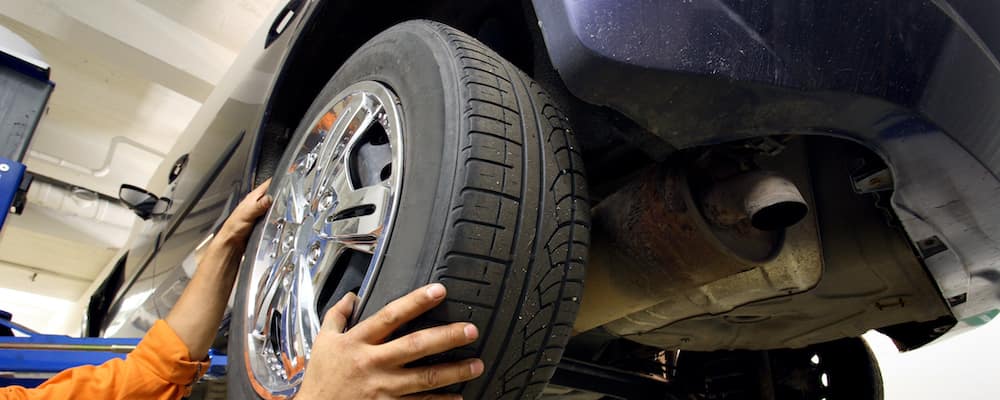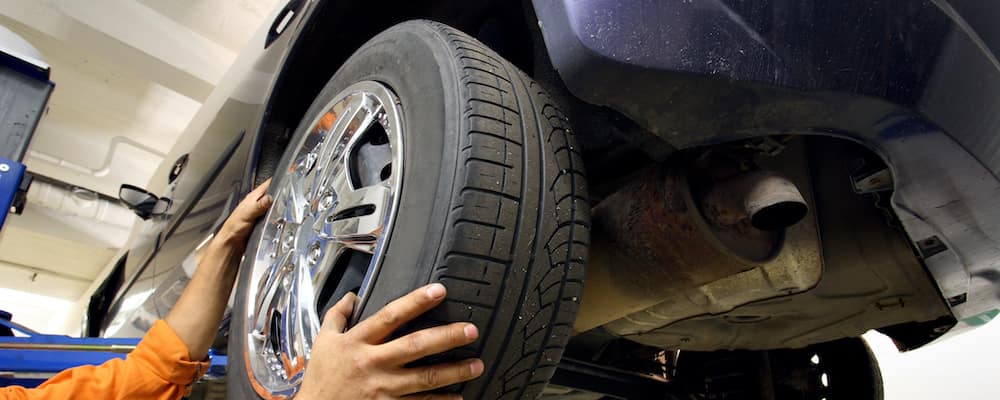
Today’s tires have become so trouble-free that many drivers ignore them completely, skipping critical inspections and maintenance procedures until there is a problem. At Valley Car Group, we know that tire rotations are often one of the most overlooked maintenance items.
What is a Tire Rotation?
Tire rotation involves moving tires from one position on a vehicle to another. A typical tire rotation moves the front tires to the rear, and the tires at the rear of the vehicle to the front.
Often in this procedure, one set of tires also changes sides. For example, the left and right rear tires changes sides when moved to the front of the vehicle, while the front tires stay on their respective sides when moved to the rear.
How Often Should You Rotate Your Tires?
Typically, you need a tire rotation every 5,000 to 7,500 miles, though there are exceptions. If you aren’t sure, your owner’s manual will have that information.
Why Rotate Your Tires
Tire rotation is done to ensure that your tires wear evenly. This can extend tire life and save you money in the long run.
Even tire wear is also important for balanced handling. For example, failure to rotate tires on a front-wheel-drive vehicle will eventually result in the front tires having significantly less tread than the rear tires. In an emergency, this could make the vehicle more difficult to control, especially if the road is wet or slippery.
How to Do It Yourself
Tire rotation can easily be done at home, but only if you have the appropriate skills and equipment.
Requirements include:
- A hard, flat, and level work area
- A jack
- Jack stands
- Wheel chocks to keep the car from rolling
- A torque wrench to make sure that the lug nuts or bolts are tightened properly
- A standard set of hand tools
It’s important to keep in mind that rotating tires requires quite a bit of muscle power. It is also crucial to never get under a vehicle supported only by a jack. The bigger issue is that when rotating tires you will need to have two tires off at the same time.
Before you rotate your tires, you should:
- Thoroughly examine each tire for possible tread or sidewall damage. Remember to check both the inner and outer sidewalls.
- Check the date code on your tires. This is because tires deteriorate over time, eventually becoming unsafe. In fact, many safety experts and automakers recommend not using tires older than six years of age.
- Use a torque wrench when tightening lug nuts. This will ensure that the wheels are properly mounted on your vehicle. If you don’t tighten the lug nuts enough, they could loosen, possibly resulting in wheel separation while driving. Too much tightening risks possible brake rotor warping, resulting in vibration while stopping and longer stopping distances.
- Check the air pressure. Use a quality gauge when the tires are cold to get an accurate reading. Consult your owner’s manual to find the correct level of pressure for your tires.
Don’t think you can do it yourself? No problem! If there’s a Costco or other tire shop nearby they can rotate your tires for you for a small fee!
If you’re interested in selling your car, Valley Car Group will purchase it from you! For more information, or to schedule a free appraisal, call (866) 289-6922 today!

